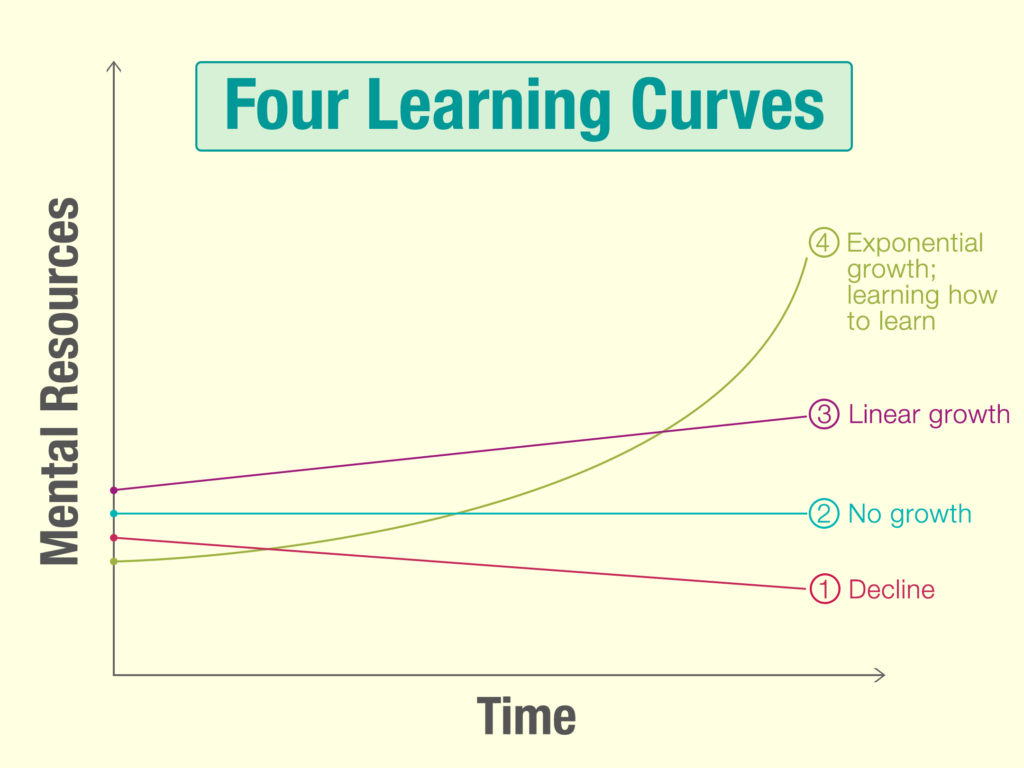Download the PDF of this Slide Set here.

Positive Neuroplasticity: The Mindful Cultivation Of Resilient Well-Being (SLIDES)
Positive Neuroplasticity: The Mindful Cultivation Of Resilient Well-Being
Greater Good Science Center, UC Berkeley
September 11, 2018 | Rick Hanson, Ph.D.
1
The Value of Inner Resources
To have lasting well-being in a changing world, we’ve got to be resilient.
To be resilient, we’ve got to have inner resources.
2
Shaping the Course of a Life
Challenges
Vulnerabilities
Resources
3
Location of Resources
World
Body
Mind
4
Some Inner Resources
Mindfulness
Patience, Determination, Grit
Emotional Intelligence
Character Virtues
Positive Emotions
Interpersonal Skills
5
Location of Resources
World
Body
Mind
6
The harder a person’s life, the more challenges one has, the less the outer world is helping – the more important it is to develop inner resources.
7
Researchers have focused on identifying and using resources – such as workplace mindfulness – but what about developing them in the first place?
8
The majority of our inner resources are acquired, through emotional, somatic, social, and motivational learning – which is fundamentally hopeful.
9
Which means Changing the Brain for the Better
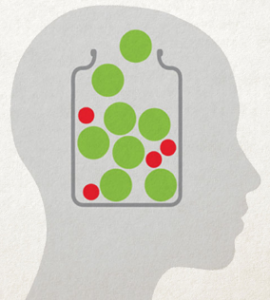
10
Self-Directed Neuroplasticity
An Overview of Current Research
Enormous research on people that (1) mental states and traits have neural correlates and (2) mental practices change states and traits
Enormous research on non-human animals that various stimuli (with related presumed mental states) change their brains
Much research on people that mental training changes their brains Some unintegrated research on deliberate mental factors that increase gains from therapy and psycho-social programs
Two studies on training the systematic use of such mental factors
11
Mental resources are acquired
in two stages:
Encoding → Consolidation
Activation → Installation
State → Trait
12
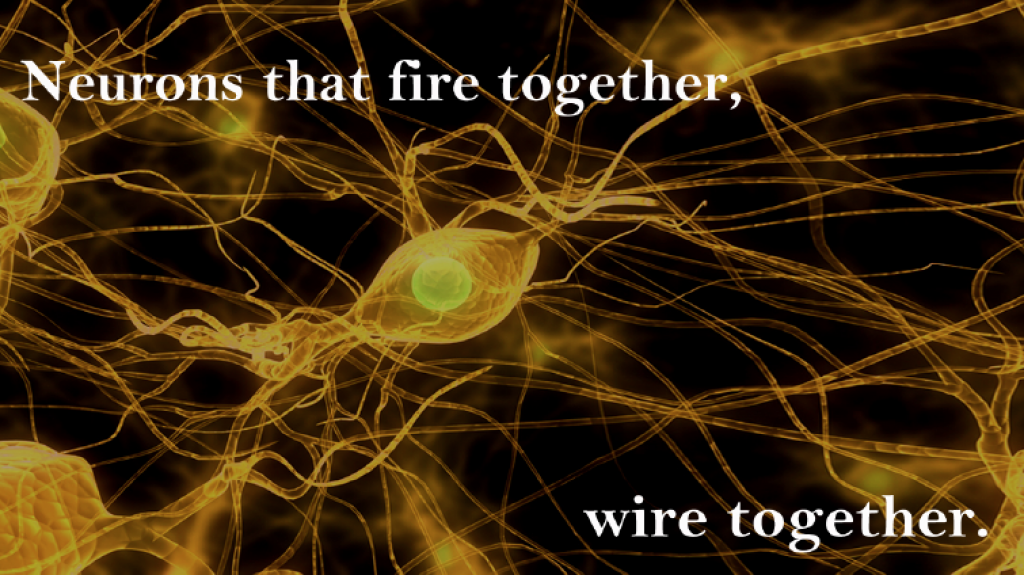 13
13
Key Mechanisms of Neuroplasticity
• (De)Sensitizing existing synapses
• Building new synapses between neurons
• Altered gene expression inside neurons
• Building and integrating new neurons
• Altered activity in a region
• Altered connectivity among regions
• Changes in neurochemical activity (e.g., dopamine)
• Changes in neurotrophic factors
• Modulation by stress hormones, cytokines
• Slow wave and REM sleep
• Information transfer from hippocampus to cortex
14
We become more compassionate by repeatedly installing experiences of compassion.
We become more grateful by repeatedly installing experiences of gratitude.
We become more mindful by repeatedly installing experiences of mindfulness.
15
BUT: Experiencing doesn’t equal learning. Activation without installation may be pleasant, but no trait resources are acquired.
What fraction of our beneficial mental states lead to lasting changes in neural structure or function?
16
Learning is the strength of strengths, since it’s the one we use to grow the rest of them.
Knowing how to learn the things that are important to you could be the greatest strength of all.
19
Velcro for Bad, Teflon for Good
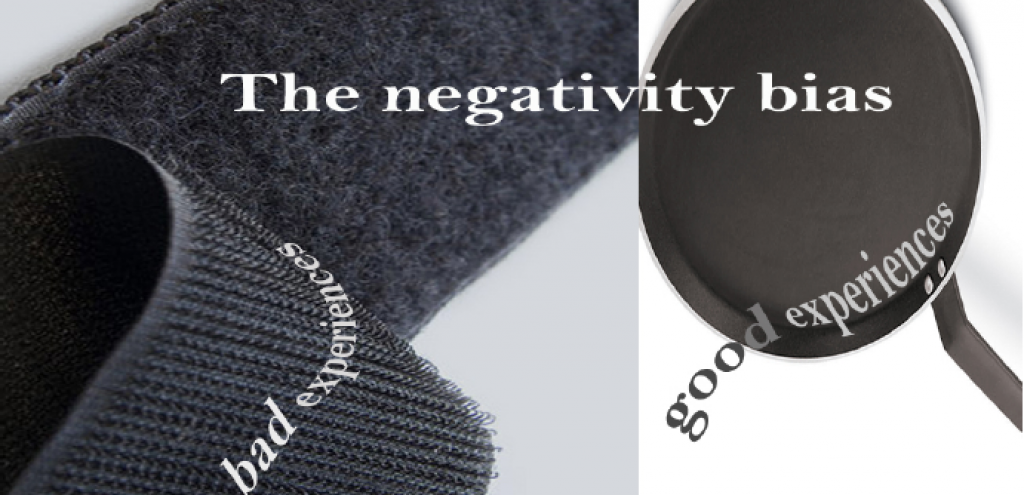 20
20
The Negativity Bias
As the nervous system evolved, avoiding “sticks” was usually more consequential than getting “carrots.”
1. So we scan for bad news,
2. Over-focus on it,
3. Over-react to it,
4. Turn it quickly into (implicit) memory,
5. Sensitize the brain to the negative, and
6. Get into vicious cycles with others.
21
The Negativity Bias
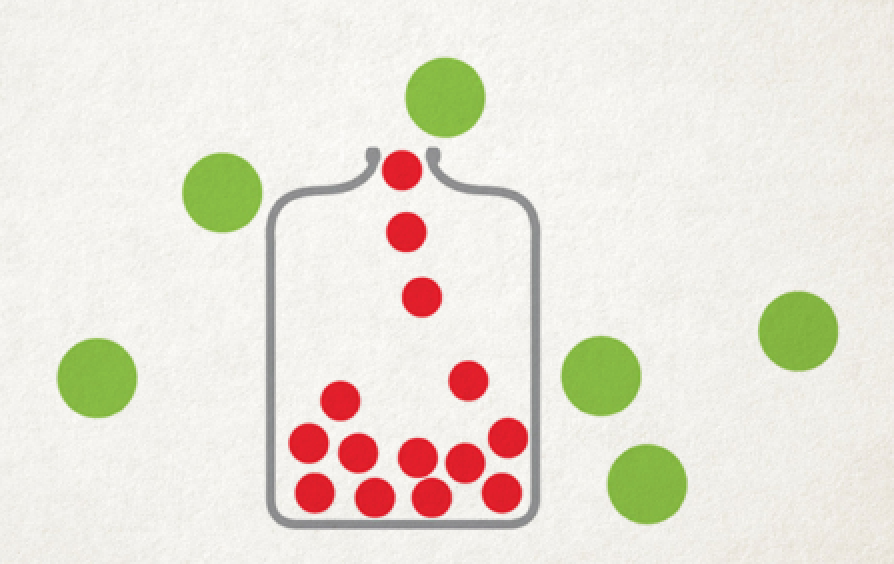
22
Lasting Gains from Passing Experiences
How can we increase the conversion rate of beneficial states to beneficial traits?
23
HEAL: Turning States into Traits
Activation
1. Have a beneficial experience
Installation
2. Enrich the experience
3. Absorb the experience
4. Link positive and negative material (Optional)
24
Have a Beneficial Experience
 25
25
Enrich It
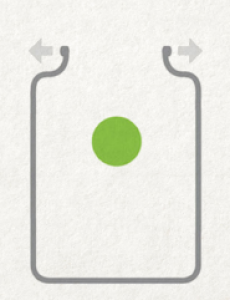 26
26
Absorb It
 27
27
Link Positive & Negative Material
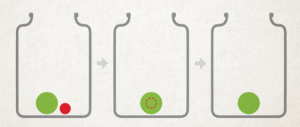 28
28
Have It, Enjoy It
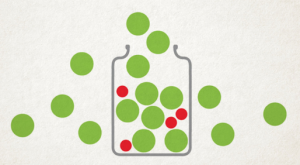 29
29
Let’s Try It
Notice
Relaxing as you exhale
Create
Gratitude, gladness
Create
Warm feelings for someone
For each of these:
Have the experience. Enrich it. Absorb it.
30
It’s Good to Take in the Good
Develops psychological resources:
• General – resilience, positive mood, feeling loved, etc.
• Specific – matched to challenges, wounds, deficits
Has built-in, implicit benefits:
• Training attention and executive functions
• Treating oneself kindly, that one matters
May sensitize the brain to the positive
Fuels positive cycles with others
31
Keep a green bough
in your heart,
and a singing bird
will come.
-Lao Tzu
32
Growing Key Resources
Resilience is required for challenges to our needs.
Understanding the need that is challenged helps us identify, grow, and use the specific mental resource(s) that are best matched to it.
33
What – if it were more present in the mind of a person – would really help?
How could a person have and install more experiences of these mental resources?
34
Meeting Our Three Fundamental Needs
- Safety
Avoiding harms
(threat response) - Satisfaction
Approaching rewards
(goal pursuit) - Connection
Attaching to others
(social engagement)
35
The Evolving Brain
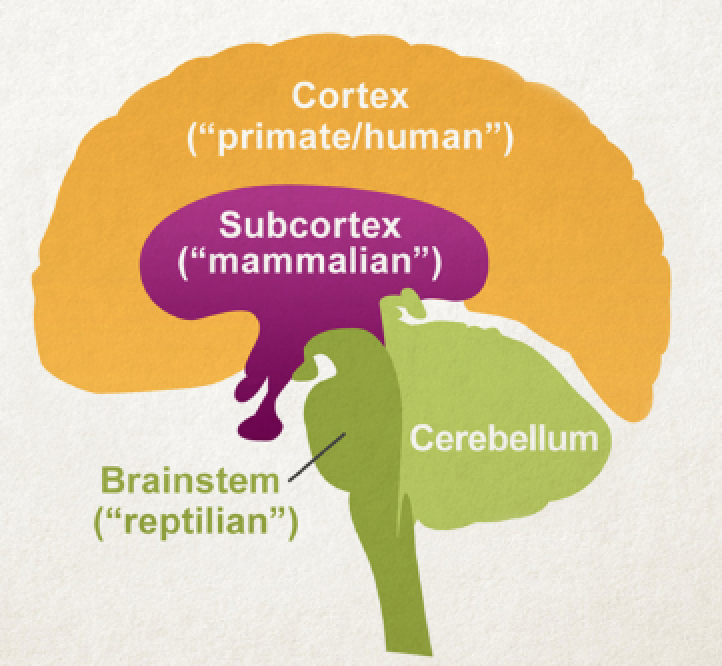 36
36
Matching Resources to Needs
Safety > Peace
See actual threats, See resources, Grit, Fortitude, Feel protected, Alright right now, Relaxation, Calm
Satisfaction > Contentment
Gladness, Feel successful, Healthy pleasures, Impulse control, Aspiration, Enthusiasm
Connection > Love
Empathy, Compassion, Kindness, Wide circle of “us”, Assertiveness, Self-worth, Confidence
37
Wider Implications
As we grow inner resources, we become more able to cope with stress, recover from trauma, and pursue our aims.
At the individual level, this is the foundation of resilient well-being.
38
At the level of groups and countries, people become less vulnerable to the classic manipulations of fear and anger, greed and possessiveness, and “us” against “them” conflicts.
Which has big implications for our world.
39
Think not lightly of good,
saying, “It will not come to me.”
Drop by drop is
the water pot filled.
Likewise, the wise one,
Gathering it little by little,
Fills oneself with good.
-Dhammapada 9.122
40
Supplemental Materials
Meditation experience is associated with increased cortical thickness.
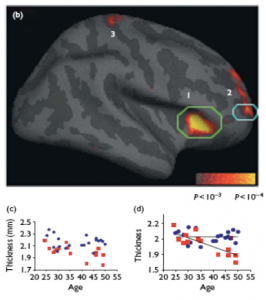
Lazar, et al. 2005.
Neuroreport, 16, 1893-1897.
41
In the Garden of the Mind
1. Be with what is there
2. Decrease the negative
3. Increase the positive
Witness. Pull weeds. Plant flowers.
Let be. Let go. Let in.
Mindfulness is present in all three.
“Being with” is primary – but not enough.
We also need “wise effort.”
42
The Two Ways To Have a Beneficial Experience
- Notice one you are already having.
• In the foreground of awareness
• In the background - Create One.
43
Two Aspects of Installation
Enriching
Mind – big, rich, protected experience
Brain – intensifying and maintaining neural activity
Absorbing
Mind – intending and sensing that the experience is received into oneself, with related rewards
Brain – priming, sensitizing, and promoting more effective encoding and consolidation
44
Enriching an Experience
• Duration – 5+ seconds; protecting it; keeping it going
• Intensity – opening to it in the mind; helping it get big
• Multimodality – engaging multiple aspects of experience, especially perception and emotion
• Novelty – seeing what is fresh; “don’t know mind”
• Salience – seeing why this is personally relevant
45
Absorbing an Experience
• Intend to receive the experience into yourself.
• Sense the experience sinking into you.
– Imagery – Water into a sponge; golden dust sifting down; a jewel into the treasure chest of the heart
– Sensation – Warm soothing balm
– Give over to it; let it change you.
• Be aware of ways the experience is rewarding.
46
Four Ways to Use HEAL with Others
• Doing it implicitly
• Teaching it and leaving it up to people
• Doing it explicitly with people
• Asking people to do it on their own
47
HEAL in Classes and Trainings
• Take a few minutes to explain it and teach it.
• In the flow, encourage Enriching and Absorbing, using natural language.
• Encourage people to use HEAL on their own.
• Do HEAL on regular occasions (e.g., at end of a therapy session, at end of mindfulness practice)
48
Suggested References
- See www.RickHanson.net/key-papers/ for other suggested readings.
- Atmanspacher, H. & Graben, P. (2007). Contextual emergence of mental states from neurodynamics. Chaos & Complexity Letters, 2, 151-168.
- Bailey, C. H., Bartsch, D., & Kandel, E. R. (1996). Toward a molecular definition of long-term memory storage. PNAS, 93(24), 13445-13452.
- Baumeister, R., Bratlavsky, E., Finkenauer, C. & Vohs, K. (2001). Bad is stronger than good. Review of General Psychology, 5, 323-370.
- Bryant, F. B., & Veroff, J. (2007). Savoring: A new model of positive experience. Mahwah, NJ: Erlbaum.
- Casasanto, D., & Dijkstra, K. (2010). Motor action and emotional memory. Cognition, 115, 179-185.
- Claxton, G. (2002). Education for the learning age: A sociocultural approach to learning to learn. Learning for life in the 21st century, 21-33.
- Clopath, C. (2012). Synaptic consolidation: an approach to long-term learning.Cognitive Neurodynamics, 6(3), 251–257.
- Craik F.I.M. 2007. Encoding: A cognitive perspective. In (Eds. Roediger HL I.I.I., Dudai Y. & Fitzpatrick S.M.), Science of Memory: Concepts (pp. 129-135). New York, NY: Oxford University Press.
- Davidson, R.J. (2004). Well-being and affective style: neural substrates and biobehavioural correlates. Philosophical Transactions of the Royal Society, 359, 1395-1411.
- Dudai, Y. (2004). The neurobiology of consolidations, or, how stable is the engram?. Annu. Rev. Psychol., 55, 51-86.
- Dweck, C. (2006). Mindset: The new psychology of success. Random House.
- Fredrickson, B. L. (2013). Positive emotions broaden and build. Advances in experimental social psychology, 47(1), 53.
- Garland, E. L., Fredrickson, B., Kring, A. M., Johnson, D. P., Meyer, P. S., & Penn, D. L. (2010). Upward spirals of positive emotions counter downward spirals of negativity: Insights from the broaden-and-build theory and affective neuroscience on the treatment of emotion dysfunctions and deficits in psychopathology. Clinical psychology review, 30(7), 849-864.
- Hamann, S. B., Ely, T. D., Grafton, S. T., & Kilts, C. D. (1999). Amygdala activity related to enhanced memory for pleasant and aversive stimuli. Nature neuroscience, 2(3), 289-293.
- Hanson, R. 2011. Hardwiring happiness: The new brain science of contentment, calm, and confidence. New York: Harmony.
- Hölzel, B. K., Ott, U., Gard, T., Hempel, H., Weygandt, M., Morgen, K., & Vaitl, D. (2008). Investigation of mindfulness meditation practitioners with voxel-based morphometry. Social cognitive and affective neuroscience, 3(1), 55-61.
- Hölzel, B. K., Carmody, J., Evans, K. C., Hoge, E. A., Dusek, J. A., Morgan, L., … & Lazar, S. W. (2009). Stress reduction correlates with structural changes in the amygdala. Social cognitive and affective neuroscience, nsp034.
- Jamrozik, A., McQuire, M., Cardillo, E. R., & Chatterjee, A. (2016). Metaphor: Bridging embodiment to abstraction. Psychonomic bulletin & review, 1-10.
- Kensinger, E. A., & Corkin, S. (2004). Two routes to emotional memory: Distinct neural processes for valence and arousal. Proceedings of the National Academy of Sciences of the United States of America, 101(9), 3310-3315.
- Koch, J. M., Hinze-Selch, D., Stingele, K., Huchzermeier, C., Goder, R., Seeck-Hirschner, M., et al. (2009). Changes in CREB phosphorylation and BDNF plasma levels during psychotherapy of depression. Psychotherapy and Psychosomatics, 78(3), 187−192.
- Lazar, S., Kerr, C., Wasserman, R., Gray, J., Greve, D., Treadway, M., McGarvey, M., Quinn, B., Dusek, J., Benson, H., Rauch, S., Moore, C., & Fischl, B. (2005). Meditation experience is associated with increased cortical thickness. Neuroreport, 16, 1893-1897.
- Lee, T.-H., Greening, S. G., & Mather, M. (2015). Encoding of goal-relevant stimuli is strengthened by emotional arousal in memory. Frontiers in Psychology, 6, 1173.
- Lutz, A., Brefczynski-Lewis, J., Johnstone, T., & Davidson, R. J. (2008). Regulation of the neural circuitry of emotion by compassion meditation: Effects of meditative expertise. PLoS One, 3(3), e1897.
- Madan, C. R. (2013). Toward a common theory for learning from reward, affect, and motivation: the SIMON framework. Frontiers in systems neuroscience, 7.
- Madan, C. R., & Singhal, A. (2012). Motor imagery and higher-level cognition: four hurdles before research can sprint forward. Cognitive Processing, 13(3), 211-229.
- McEwen, B. S. (2016). In pursuit of resilience: stress, epigenetics, and brain plasticity. Annals of the New York Academy of Sciences, 1373(1), 56-64.
- McGaugh, J.L. 2000. Memory: A century of consolidation. Science, 287, 248-251.
- Nadel, L., Hupbach, A., Gomez, R., & Newman-Smith, K. (2012). Memory formation, consolidation and transformation. Neuroscience & Biobehavioral Reviews, 36(7), 1640-1645.
- Pais-Vieira, C., Wing, E. A., & Cabeza, R. (2016). The influence of self-awareness on emotional memory formation: An fMRI study. Social cognitive and affective neuroscience, 11(4), 580-592.
- Palombo, D. J., & Madan, C. R. (2015). Making Memories That Last. The Journal of Neuroscience, 35(30), 10643-10644.
- Paquette, V., Levesque, J., Mensour, B., Leroux, J. M., Beaudoin, G., Bourgouin, P. & Beauregard, M. 2003 Change the mind and you change the brain: effects of cognitive-behavioral therapy on the neural correlates of spider phobia. NeuroImage 18, 401–409.
- Rozin, P. & Royzman, E.B. (2001). Negativity bias, negativity dominance, and contagion. Personality and Social Psychology Review, 5, 296-320.
- Sneve, M. H., Grydeland, H., Nyberg, L., Bowles, B., Amlien, I. K., Langnes, E., … & Fjell, A. M. (2015). Mechanisms underlying encoding of short-lived versus durable episodic memories. The Journal of Neuroscience, 35(13), 5202-5212.
- Talmi, D. (2013). Enhanced Emotional Memory Cognitive and Neural Mechanisms. Current Directions in Psychological Science, 22(6), 430-436.
- Thompson, E. (2007). Mind in life: Biology, phenomenology, and the sciences of mind. Harvard University Press.
- Wittmann, B. C., Schott, B. H., Guderian, S., Frey, J. U., Heinze, H. J., & Düzel, E. (2005). Reward-related FMRI activation of dopaminergic midbrain is associated with enhanced hippocampus-dependent long-term memory formation. Neuron, 45(3), 459-467.
- Yonelinas, A. P., & Ritchey, M. (2015). The slow forgetting of emotional episodic memories: an emotional binding account. Trends in cognitive sciences, 19(5), 259-267.


